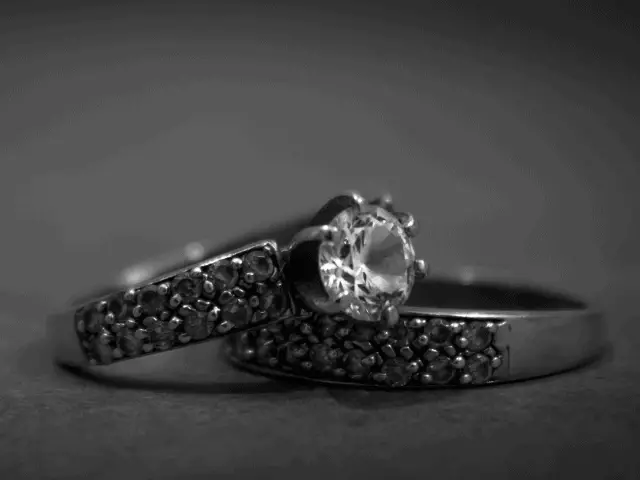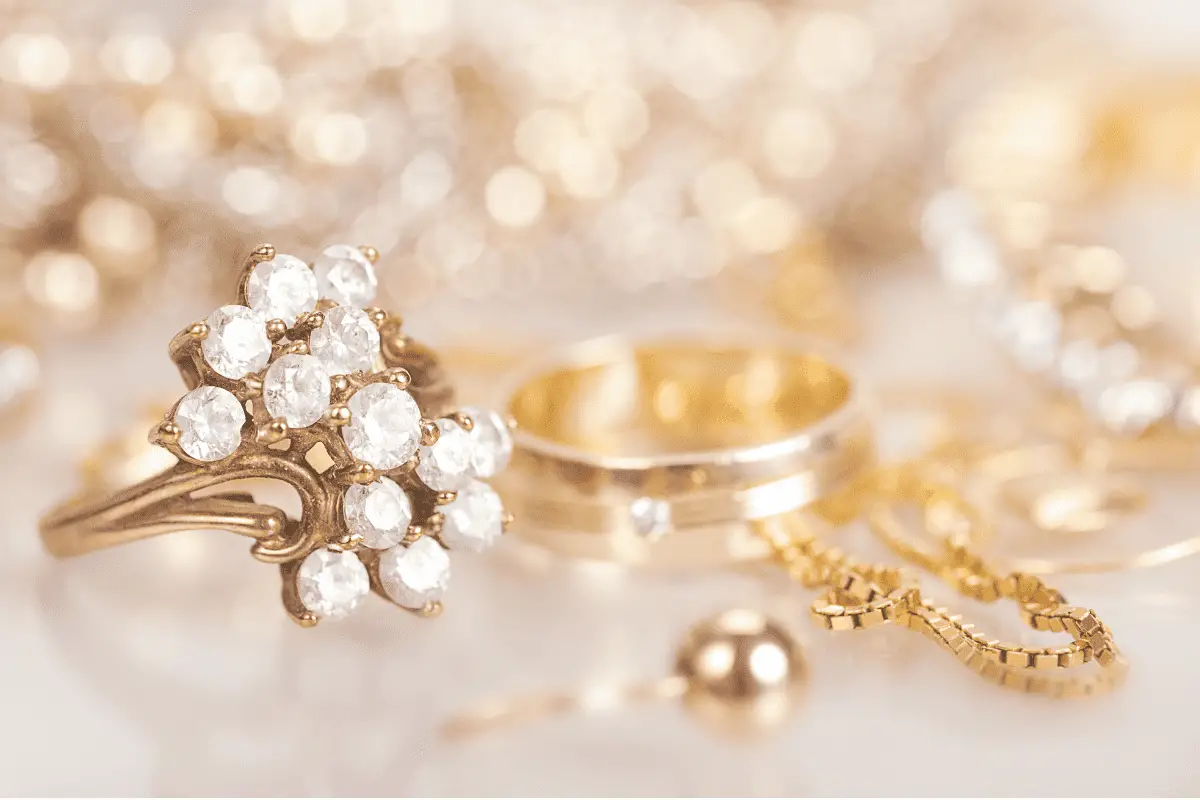Is your jewelry box or drawer a messed-up tangle of necklaces, brooches or pins, rings, earrings, watches, cufflinks, bracelets, and other items? Are there some keychains and other souvenirs mixed in?
Yikes! You’d better get things straightened out in a hurry before packing your jewelry for moving!
You could simply toss it all in a single box and wait until you reach your new home before trying to separate everything and deciding what to discard or give to charity.
But experience tells us that doing this would be a terrible idea. What if you broke a valuable necklace trying to separate the strands or anything that might have attached to it? Or you let something slip down the drain while trying to rinse off some of the accumulated dust?
Keep reading to learn how to pack jewelry for moving the right way.
Table of Contents
Cleaning and Sorting a Jewelry Box Before Moving
There are fundamentally two categories of jewelry : costume jewelry (the kind you wear when partying or at work on a “casual Friday) and precious jewelry (the kind you hand down to future generations).
: costume jewelry (the kind you wear when partying or at work on a “casual Friday) and precious jewelry (the kind you hand down to future generations).
Each category must be dealt with differently when packing for a move.
Costume Jewelry

Unless it is an antique, most costume jewelry has very little market value. So if it isn’t a piece you adore, you might want to donate it to charity or toss it if it’s not in good condition.
Use the following questions to determine which path to follow:
- Is there noticeable wear and tear or dullness?
- Does it need repair?
- Is detangling them a lost cause?
- Are any pieces missing?
- Is an earring missing from a set?
- Is it outdated?
- Do you wear it now or will you in the future?
- Do you want to keep it for personal reasons?
Precious Jewelry

Precious jewelry is different. It’s nearly always worth keeping and/or restoring for the material value alone. So consider the following questions about what to do with your precious jewelry item(s):
- Is it tarnished, or does it have a dull finish?
- If it’s a ring, is its circumference misshapen?
- Is it missing any gems or other pieces?
- Is it broken?
- If it’s an earring set, is it missing an earring?
- Does a ring fit you or someone you know?
- Is a necklace or chain impossible to detangle?
- Is it something you no longer wear or want?
If you no longer wear a piece or even want it, you should offer it to a close friend or family member who does. Of course, if no one is interested, you can always sell it to an antique, precious metal, or gemstone dealer.
Packing Jewelry for Moving
The saying goes, “There’s a method to our madness.”
But in this case, we’re a lot more about method than madness—as we pack our jewelry for moving. Many people will load everything into a large jewelry chest or individual boxes so everything will stay in place during the trip.
But you might wonder, “how did it become disorganized and tangled in the first place?
Clearly, packing jewelry for moving involves more—specifically, the following jewelry packing strategies:
- String your thinner chain necklaces through drinking straws, bending or taping them to join the ends. Be sure the chain is free of knots, and you have properly clasped it. Read more about other ways to pack necklaces for moving.
- If you have dangle earrings for pierced ears and know how easily they can get lost or caught on other jewelry, try attaching them to medium or large two-holed buttons. Then place each pair inside an egg crate and tape it all around.
- Do you have stud earrings for pierced ears? Use a compartmentalized pillbox, being sure the compartments are large enough.
- Pack rings in a hard-sided, snap-shut glasses case. Run a string through each, tying it at the ends. Then secure the outside with a couple of rubber bands or removable tape.
For precious jewelry or fragile pieces, we recommend packing them in velvet-lined pouches or boxes and placing them in a larger container to travel.
Using a Hardwood Chest or Armoire to Move Jewelry
Are you fortunate enough to own one of these typically well-built pieces of furniture? Congratulations! You must have a fabulous jewelry collection to store in it!
However, to prevent tangling or lost items or pieces, you should wrap or enclose each item inside. For example, necklaces and chains packed in straws should work fine, and if the compartments accommodate them, so will the earrings hanging from buttons or even those in pillboxes.
Larger containers like glasses cases and the pieces’ original cardboard boxes probably should travel separately, in one larger box. But given the integrity of a hardwood jewelry repository, try to put as much jewelry as possible inside. Besides, since you would still need to move that furniture piece, why not put it to good use?
Finally, Don’t Lose Your Jewelry While Moving!
Do you ever wonder how much jewelry goes missing during a move? We can only guess, but we’d bet it’s a lot.
From overlooked smaller pieces that have fallen underneath furniture or become caught in rug fibers to negligence or outright theft during loading and unloading, you could lose a lot of your investment—whether it’s a sentimental or monetary loss.
First, have your items appraised or reappraised to determine their current values and replacement costs. Then, have your homeowners’ insurance coverage adjusted accordingly. Copy the appraisals and receipts and keep one set with your other personal documentation and another in a safety deposit box.
Also, account for your items. Photograph each piece and list its description., including the serial number if available. Again, make two copies.
Another important suggestion is always to keep valuable jewelry with you when moving. Do not have valuable pieces loaded on a moving van or held in storage.
Instead, keep your valuables in a local safety deposit box if you’re moving locally.
Finally, since most renters and homeowners insurance policies won’t cover the cost of damaged or lost possessions during a move, it can expose your belongings to various potential problems, such as damage, theft, negligence, etc.
Consider the added insurance options your moving company offers and choose the one that’s best for you. If you need a second opinion, contact your homeowners’ insurance carrier. Learn more here .
.

